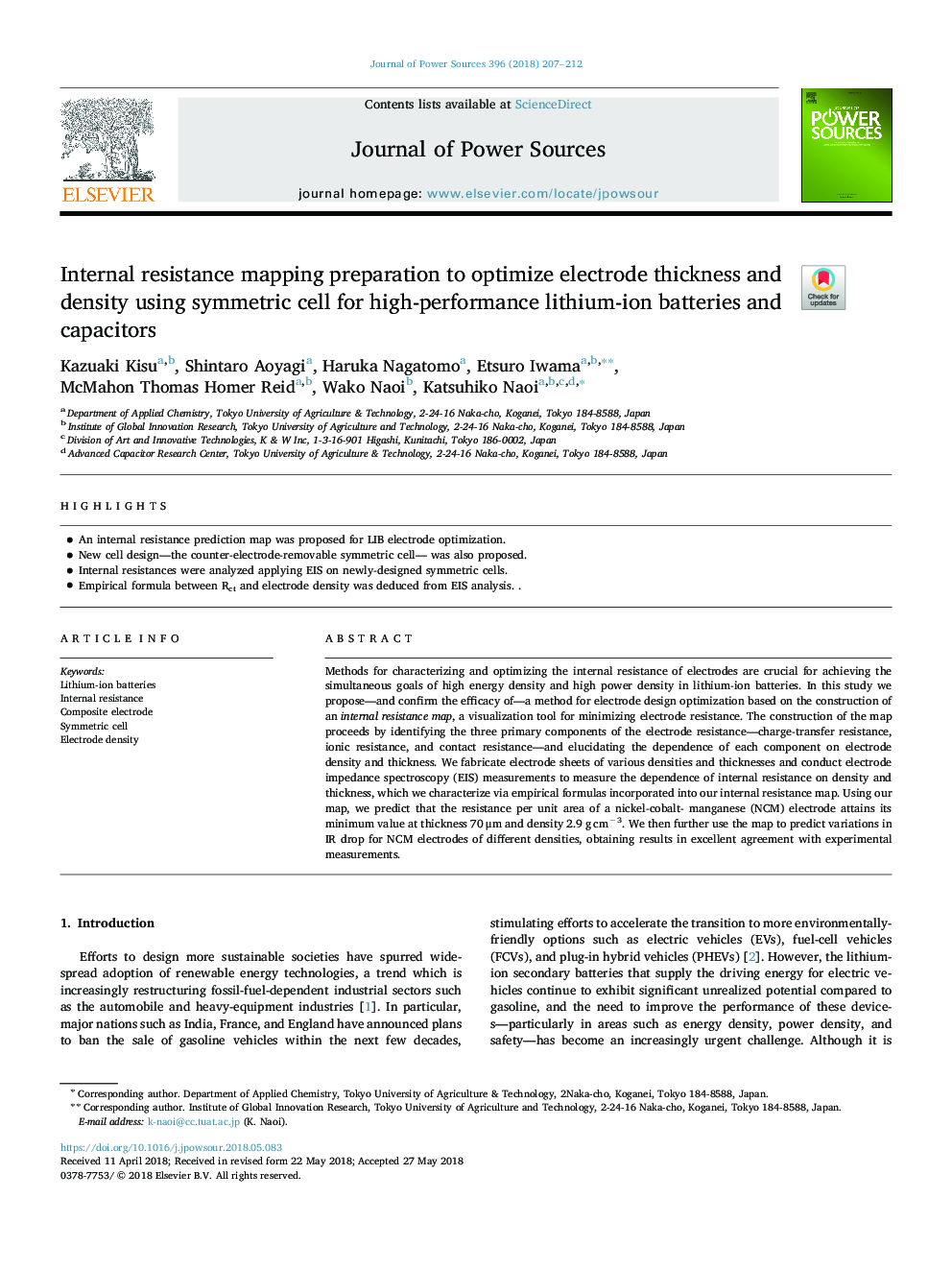| Article ID | Journal | Published Year | Pages | File Type |
|---|---|---|---|---|
| 7724741 | Journal of Power Sources | 2018 | 6 Pages |
Abstract
Methods for characterizing and optimizing the internal resistance of electrodes are crucial for achieving the simultaneous goals of high energy density and high power density in lithium-ion batteries. In this study we propose-and confirm the efficacy of-a method for electrode design optimization based on the construction of an internal resistance map, a visualization tool for minimizing electrode resistance. The construction of the map proceeds by identifying the three primary components of the electrode resistance-charge-transfer resistance, ionic resistance, and contact resistance-and elucidating the dependence of each component on electrode density and thickness. We fabricate electrode sheets of various densities and thicknesses and conduct electrode impedance spectroscopy (EIS) measurements to measure the dependence of internal resistance on density and thickness, which we characterize via empirical formulas incorporated into our internal resistance map. Using our map, we predict that the resistance per unit area of a nickel-cobalt- manganese (NCM) electrode attains its minimum value at thickness 70â¯Î¼m and density 2.9â¯gâ¯cmâ3. We then further use the map to predict variations in IR drop for NCM electrodes of different densities, obtaining results in excellent agreement with experimental measurements.
Related Topics
Physical Sciences and Engineering
Chemistry
Electrochemistry
Authors
Kazuaki Kisu, Shintaro Aoyagi, Haruka Nagatomo, Etsuro Iwama, McMahon Thomas Homer Reid, Wako Naoi, Katsuhiko Naoi,
